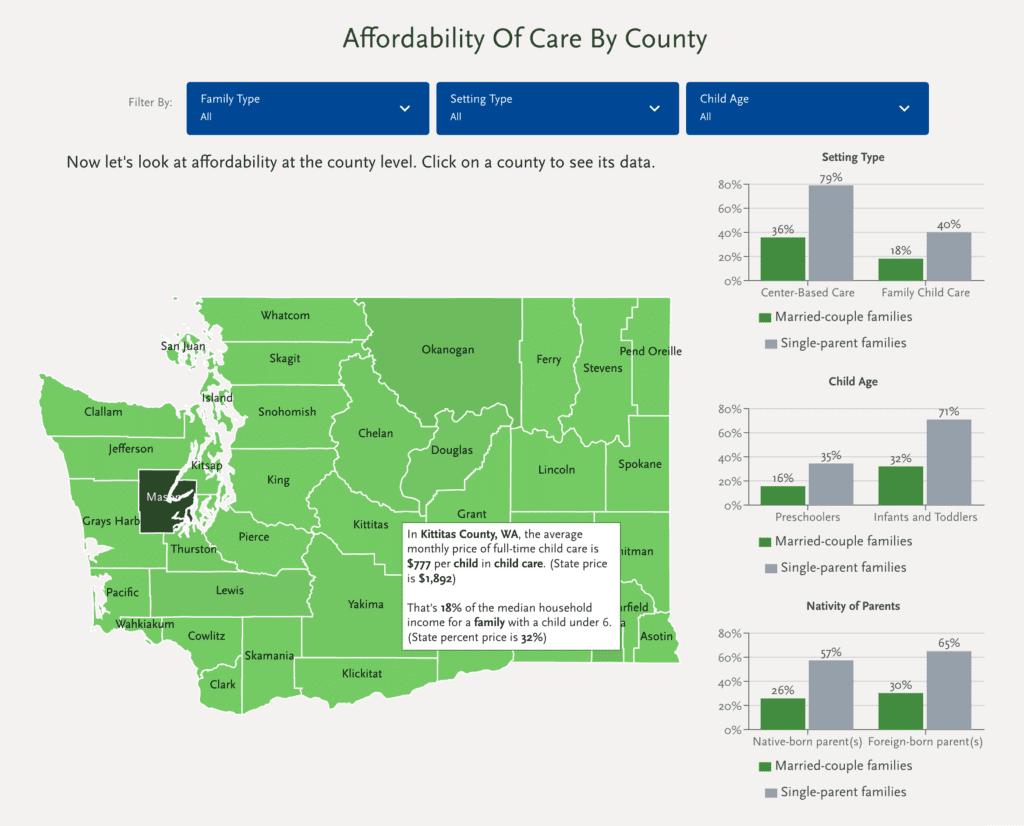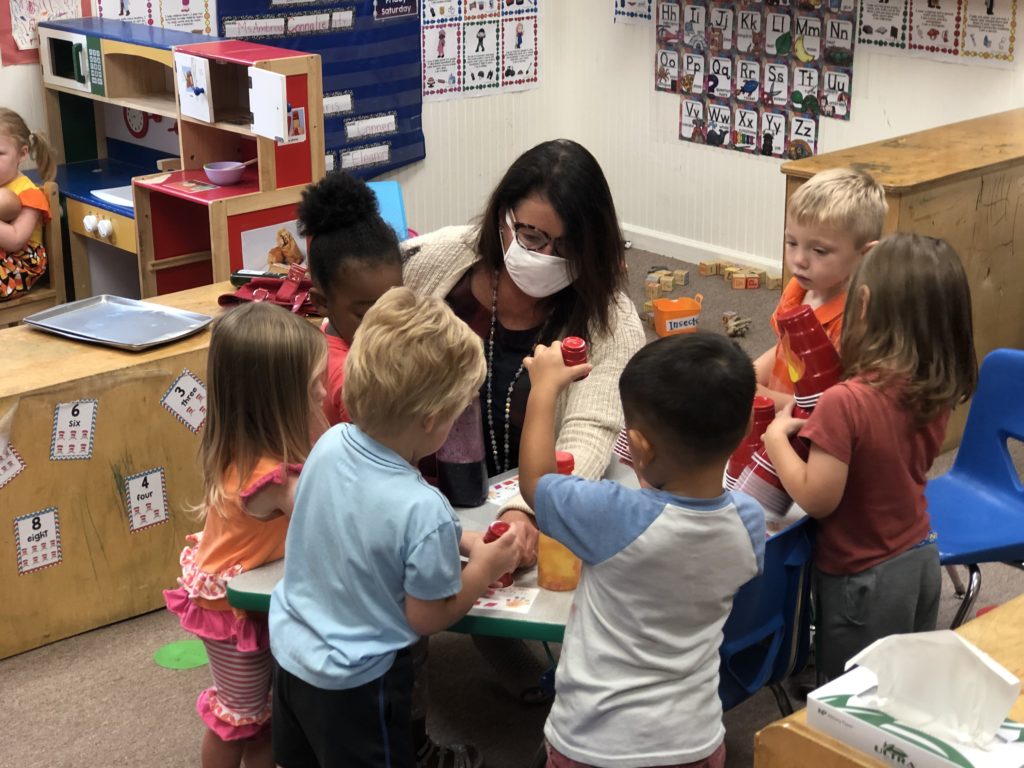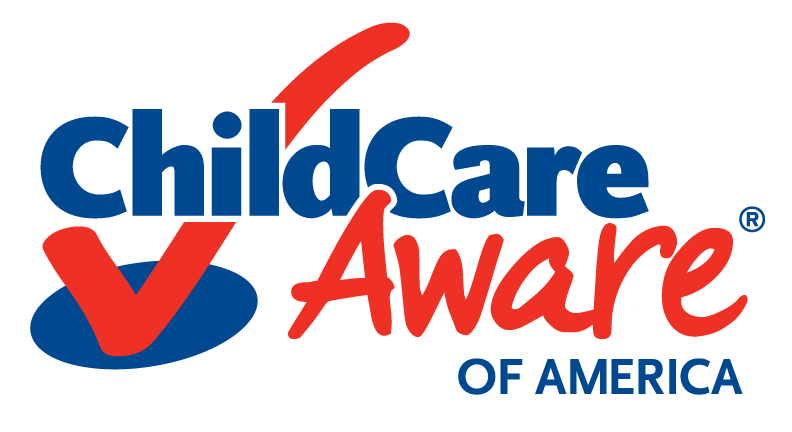Picking Up the Pieces: Building a Better Child Care System Post COVID-19
Long before COVID-19, the U.S. child care system was in trouble. Last year, Child Care Aware® of America explored that broken system in our report, The U.S. and the High Price of Child Care. We found it was:
- Fragmented. Each state has its own set of child care policies, and funding for child care comes from different sources with different requirements.
- Inequitable. Children of color and children from low-income families are less likely to attend high-quality child care programs.
- Inaccessible. For many families, high-quality child care is not an option. There are not enough child care providers to meet the demand, and providers are leaving the field in record numbers. This particularly affects families of color, families living in rural areas and children with special needs.
- Underfunded. The U.S. spends less than 0.5% of our GDP on child care – far less than most industrialized countries.
The child care system was fragile before COVID-19.
The child care industry has now shattered completely.
When COVID-19 was layered onto the already fragile child care system, it shattered. Today, many providers are in danger of closing their doors because their attendance and enrollment (and therefore their income) plunged and/or their expenses skyrocketed due to pandemic-related costs.
We’re already seeing the consequences: Parents are struggling to find child care arrangements that will allow them to work productively, either from home or back in their workplaces. Without a reliable, steady workforce, this country will not recover economically from the pandemic-related shutdown. And a reliable workforce requires a functioning child care system. Simply put – no child care, no recovery.
Why Picking Up the Pieces?
CCAoA usually releases two major reports in the fall that examine the child care landscape. State Fact Sheets explore child care supply, child care resource and referral agency (CCR&R) activities and quality initiatives in each state. The U.S. and the High Price of Child Care compares child care affordability among states. Both reports relied on data from the previous calendar year gathered from CCR&Rs across the country.
However, the data from last calendar year (2019) did not reflect the reality of the massive changes in the child care system because of COVID-19. So, we went a step further and gathered as much 2020 data as we could. The result is Picking Up the Pieces. It includes the 2019 data that typically would be included in fall reports, as well as data and stories collected as recently as July 2020. With that additional information, we were able to compare the child care system pre- and mid-pandemic.
Picking Up the Pieces is organized into three chapters that explore the impact of COVID-19 on:
This online, interactive version of the report features select material from the full report, which you can download below.
Download the report appendices.
CHAPTER 1:
Access to Child Care
Defining Access
According to an expert panel convened by Child Trends, a nonpartisan research center, and funded by the federal Office of Planning, Research, and Evaluation, access to child care ‘…means that parents, with reasonable efforts and affordability, can enroll their child in an arrangement that supports the child’s development and meets parents’ needs.
At CCAoA, we measure access by looking at how the number of child care providers changes over time. Fewer providers translate into fewer slots in child care programs and therefore less access.
2019 Data
Even before the outbreak of COVID-19 and the associated closures of child care programs, the supply of child care was decreasing. Results from our 2019 survey results show that between 2018 and 2019, 53% of states reported a decline in the number of child care centers. More alarmingly, 79% of states reported a decline in family child care (FCC) providers.
The five states that had the biggest drops in the number of providers are:
- Washington DC
- Georgia
- Florida
- Colorado
- Wyoming
New data, analysis from leading economists and anecdotes from providers and families all indicate the situation has worsened since the beginning of 2020.
Since the Start of the Pandemic
While most states have allowed child care providers to reopen following the COVID-19 shutdown, access to child care programs remains limited. That is, in part, because states have changed their child care licensing rules to help prevent the spread of COVID-19. For example, many states have reduced the number of children allowed in a classroom – in effect, the ratio of children to providers. The graphic below illustrates the change in ratios for centers in Washington state from January 2020 to July 2020.

It will probably take a year or more to fully understand the impact of COVID-19 on our child care system, but some worrying trends are emerging. As of July 2020, we found that 35% of centers and 21% of family child care programs remain closed nationwide.

“When I saw the child care dataset, the first thing that stuck out to me was how little recovery there’s been so far in many of the states in terms of the number of providers who have re-opened.
And so that really brings up concerns at this point that a lot of those providers are going to be permanently closed.“
Dr. Jessica Brown, University of South Carolina
If these closures become permanent, it will pose a serious problem as our nation works to rebuild the economy. As currently unemployed parents find work, they will again need child care for their young children. And employers need a steady, reliable workforce that’s not distracted by child care worries. In many communities, that was – and increasingly is – a problem.
Case Study: Child Care Data Center (CCDC)
This year, CCAoA built the CCDC, a data warehouse and website that allows users to explore child care data at a deeper level.

We piloted the CCDC using 2019 data about child care access and affordability provided by six states. Four of those states — Missouri, Oregon, Wisconsin and Washington — also submitted new data in July 2020. By comparing the 2019 and 2020 numbers, you can see the effect of COVID-19 on child care in those states, down to the county level.
Why Child Care Matters to Business
When their young children attend a quality child care program, parents are able to work. Their income benefits their families, and in turn businesses benefit because they have a steady workforce.
The business community is aware of the need for reliable child care in order to keep their workforce in place. When child care arrangements break down – whether because a child is sick, a snow day is called or a parent is worried about the quality of care their child is receiving – workplace productivity suffers.
The child care crisis cost Americans $57 billion a year in 2018.
The amount is now likely higher because of COVID-19.
Ready Nation represents more than 2,600 business executives dedicated to promoting public policies and programs that build a stronger workforce and economy. In 2018, the group studied the economic impact of insufficient child care on working families and businesses. They found that the nation’s child care crisis cost Americans $57 billion a year:
- Working parents lost $37 billion in income because of reduced productivity on the job and more time spent looking for work.
- Businesses lost $13 billion due to lower revenues stemming from reduced productivity and increased costs for recruitment.
- The economy lost $7 billion in income taxes as a result of the reduced earnings of working parents.
Those numbers were calculated before COVID-19. Today they undoubtedly would be higher.
What about School-Age Care?
Most research focuses on child care for children under age 6. But older children often need child care, especially with the dramatic increase in distance learning because of COVID-19. Parents need someone to supervise their children’s learning while they work, whether from home or at their workplace. Some parents are reaching out to local child care providers.
Pamela Steele has enough space to take on some school-age children in addition to the young children she serves. Other providers might have to make a trade-off. They could accept more school-age children and fewer infants and toddlers. It costs less for providers to care for older children. Reducing the number of infant and toddler slots could help providers who are in desperate need of income. But in the long run, this will worsen the supply crisis for children under age 3.
CHAPTER 2:
The Affordability of Child Care
Let’s calculate affordability for Cook County, Illinois, which includes Chicago. Start with the average price of full-time child care in the area, which is $910 per month. Divide that number by the median household income for Cook County families with children under 18, or $5,688. The result is a number representing the percentage of household income a family spends on child care for one child – in this case, 16%.
2019 Data
In 2019, working families across the country paid a significant percentage of their annual earnings to cover the price of child care.
The graphics below show how much families in four regions of the U.S. spent on child care for two children (an infant and a 4-year-old), compared to other household prices such as housing or food. In the Midwest, Northeast and South, child care is the highest category of household expenses. In the West, the price of child care is surpassed only by the high price of housing.
What about a national average price of child care?
The national average is between $9,200 and 9,600 per year.
And that cost grows for families with multiple children in care.
Every year, CCAoA calculates the affordability of child care in each state. We are often asked for a national price of child care, which we present here – with reservations. The child care landscape varies widely from state to state, and those distinctive differences are lost when you try to calculate a national figure.
With that caveat in mind, we determined that the national average price of child care for one child is between $9,200 and $9,600 a year. That represents more than 10% of household income for a married couple and 34% of household income for a single parent.
Since the Start of the Pandemic
Many providers report that COVID-19 is having a direct and profound effect on the cost of doing business.

Two other COVID-related factors are raising provider expenses: the need for more staff to address stricter teacher-child ratios, and the cost of purchasing much greater quantities of cleaning and disinfecting supplies and personal protective equipment such as masks.
Many of the providers we spoke with said that eventually, they’ll have to raise their tuition rates, making child care less affordable for families. They’re hesitant to raise prices now, during an economic downturn that has so many families reeling. Center director Lesia Daniel sees no good option.
Case Study: The Effects of COVID-19 on child care in Washington State
Deeann Puffert, executive director of Child Care Aware® of Washington, created a tool that providers can use to determine how much it costs to run their business, given the increased restrictions due to COVID-19. The tool demonstrates how lower provider/child ratios translate into higher costs for providers.
You can see from the table below that:
- Washington’s provider/child ratio for infants did not change, so there’s no additional staffing costs for an infant classroom.
- Lower ratios resulted in a 60% increase in the monthly cost of providing care for every toddler, and a 95% increase in the cost for a preschooler.
- For all children who receive vouchers, the subsidy amount paid to providers is less than the cost of providing care.
- The provider’s monthly shortfall exceeds $25,000.
The bottom line: A child care center in the state of Washington could not survive long under these new ratios.
CHAPTER 3:
Child Care Quality
Quality is a critical factor when selecting child care. But how is it measured?
2019 Data
States recognize quality child care programs in multiple ways. Many states have a quality rating and improvement system (QRIS), similar in concept to a rating system for restaurants. There are multiple QRIS levels, and each is associated with a defined set of program standards. States also recognize providers who become accredited through early childhood organizations such as the National Association of Young Children (NAEYC). Accreditation can be a rigorous process.
Our survey results indicate that nationwide, 63% of center-based programs and 52% of FCC providers participate in QRIS. Furthermore, only 9% of child care centers and just 2% of family child care homes are accredited. While there’s an abundance of programs that acknowledge the importance of quality, their participation in formal quality recognition programs remains low.
One reason quality is important: Research shows that children who attend high-quality programs have more positive long-term outcomes. The benefits include higher rates of graduation from high school, higher income, better physical health and stronger families. The outcomes also benefit the country, because they’re associated with lower crime rates, a stronger economy and healthier communities.
Since the Start of the Pandemic
As with the data on affordability, we won’t see the long-term impact of COVID-19 on the supply of quality child care until later. In the short term, several providers at top-rated programs told us they were frustrated because they’ve had to shift their focus from early childhood development to health and safety.
Case Study: Cost to Provide Quality Child Care in Portland, Oregon
High-quality child care requires additional investments and costs providers more money to deliver. In 2018, the Center for American Progress (CAP) developed an online calculator that estimated a child care center’s cost per child when one or more quality indicators are selected (e.g., lower provider/child ratios, bigger classrooms, etc.).
Opportunities Exchange is a nonprofit that consults with early childhood programs about financial issues. Using the CAP calculator, they analyzed how much child care centers in Portland, Oregon that serve children who receive a subsidy are likely earning or losing during COVID-19. They considered the:
- Cost of care – how much a provider spends to provide care for a child, based on the child’s age
- Provider revenue – how much the provider earns per child, including
- The subsidy reimbursement from the state
- The required parent co-payment
Opportunities Exchange calculated the profit/loss for a center meeting minimum licensing requirements and for a center providing high-quality care. You can see the results below.
Centers that meet just minimum licensing requirements and that serve both infants and toddlers are likely to make a profit. However, centers that offer higher-quality care are likely to lose money on every child served.
Sadly, this story is repeated across the U.S. It is rarely possible for providers to serve infants and toddlers without losing money. The significant loss in revenue caused by this pandemic may be a key factor in these providers’ decisions about whether to continue operating.
CONCLUSION:
Where Do We Go From Here?
Even before COVID-19, the majority of child care providers were operating on razor-thin profit margins – with programs in low socioeconomic areas struggling the most to keep their doors open. Now, because of COVID-19 and the associated drop in the number of providers, many more U.S. families are affected, including upper-middle-class families.

“Although some of these providers may reopen, it is likely that a significant portion of child care capacity is permanently lost….the problem is not a demand-related phenomenon but related to supply. Even as states reopen their businesses and parents return to work, they will find that there is not enough child care available.”
Dr. Randy Albelda, University of Massachusetts Boston
What Will It Take to Fix the Child Care System?
There’s no simple solution to the intractable problems in our current system. Building a better system will require three things: public investment, a solid data foundation and resources and supports for families, children and providers.
Investment
A significant public investment – $50 billion in dedicated funding – is needed right now to stabilize the child care industry. The money would be used to help keep providers in business and make child care more affordable for families. In addition to the $50 billion, our child care system must have continued public investment to ensure that working families have access to affordable, high-quality child care.
Data
Data is abundant and available – but not accessible. It’s extremely hard to get data from all states in a timely, standardized, systematic and efficient way. Child care data is scattered throughout the country in systems built by different vendors and owned by different entities, sometimes making it out of reach. We cannot afford to be unable to access data needed to impact lives.
CCAoA encourages the development of automated data systems with common standards. These systems will ensure that the collection, management and dissemination of data is more efficient.
Resources
Child Care Resource and Referral Agencies (CCR&Rs) are the single best source of resources and support for the child care community, including families, children and providers. Among many other things, they:
- Help families navigate complicated child care systems and provide referrals to affordable, quality child care programs.
- Work to increase programs’ access to financial resources and higher compensation.
- Connect child care programs to resources and trainings to improve their business practices.
Any proposed solution to the current crisis should include CCR&Rs. They are the main point of contact between all of the various members of the child care system. We can leverage their expertise to build a new and better system.
Dig Deeper
Use our Child Care Data Center to explore state and county-level data about child care affordability, accessibility, health and COVID-19’s impact. You’ll also be able to access your state’s child care Fact Sheet which you can share with lawmakers as you advocate for better policies. Download the full report to find additional case studies not shown on the interactive website.
Want to Do More?
Help CCAoA achieve our vision for the future of child care: that every family in the U.S. has access to a high-quality, affordable child care system. You can help make that vision a reality by taking action today to let your Members of Congress (as well as your state and local policymakers) know that you will hold them accountable to ensure high-quality child care is affordable for all those who need it.


